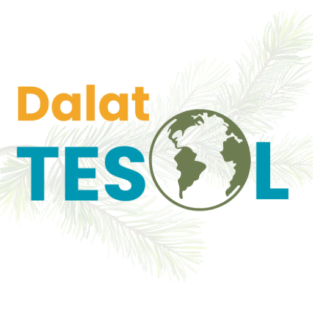By DalatTESOL
👉 A guide for graduate students learning how to evaluate academic sources, navigate journal publishing, and avoid predatory traps in the research world.
As a graduate student, you’re expected to read, cite, and eventually publish research. But not all journals or papers are created equal. Some are reputable and peer-reviewed. Others—called predatory journals—look convincing but lack academic standards and can damage your scholarly reputation.
So, how do you know what to trust?
🏛️ 1. Trust Journals Indexed in Major Databases
Academic quality is often linked to where the journal is indexed. Here are three widely trusted databases:
✅ SCOPUS
One of the largest international databases. Journals in Scopus are peer-reviewed and meet professional editorial and ethical standards.
Example journals in TESOL/Applied Linguistics:
- System (Elsevier)
- RELC Journal (SAGE)
✅ SSCI (Social Sciences Citation Index)
A part of Web of Science Core Collection. SSCI journals have high prestige and strong citation impact.
Example: TESOL Quarterly (Wiley)
✅ ESCI (Emerging Sources Citation Index)
Also under Web of Science. These are quality journals being evaluated for SSCI. Many new or regional journals start here.
📌 Remember: Journals in these databases are vetted for quality. If a paper comes from one of these sources, it’s generally reliable.
🧾 2. Look at the Publisher
Reputable journals are typically published by well-established academic publishers, known for strict peer review, plagiarism checks, and editorial policies:
- Elsevier – e.g., System
- Springer – e.g., Asian-Pacific Journal of Second and Foreign Language Education
- SAGE – e.g., RELC Journal
- Taylor & Francis (Routledge) – e.g., Intercultural Education
- Wiley – e.g., TESOL Quarterly
These publishers often offer free access to author guidelines, ethical policies, and peer review details—important signs of credibility.
🎯 3. What’s a Q1 Journal?
Journals are often ranked into quartiles (Q1–Q4) based on citation impact.
- Q1 = top 25% of journals in a field
- Q2 = next 25%, and so on.
Publishing in a Q1 or Q2 journal is usually a strong academic achievement. These rankings are available on Scimago Journal Rank (SJR) or Journal Citation Reports (JCR).
🚩 4. Beware of Predatory Journals
Predatory journals pretend to be scholarly, but they lack real peer review, accept poor-quality work, and often charge high fees. Their goal is profit—not academic quality.
Red flags:
- Very fast acceptance promises (e.g., “Decision in 48 hours!”)
- Fake or unclear editorial board
- High article processing charges (APCs) with no peer review
- Poor website layout or grammar
- No indexing in Scopus, SSCI, or ESCI
⚠️ Example: A journal with an impressive name like International Journal of Educational Innovation Research may sound legitimate—but if it’s not indexed, doesn’t list review policies, and accepts anything within a few days, it’s likely predatory.
💬 5. What If You’re Not Sure?
It’s normal to feel unsure when you’re just starting out. Here’s what to do:
- ✅ Ask your lecturer, thesis supervisor, or a trusted researcher
- ✅ Check the journal’s website for indexing, editorial board, and review process
- ✅ Use Scimago Journal Rank or Web of Science to confirm indexing
- ✅ Look up the journal title + “predatory” on Google to see if there are warnings
🧠 6. Why Journal Quality Matters
Choosing the right sources and journals:
- Protects your academic reputation
- Ensures your arguments are based on reliable knowledge
- Improves your chances of publication success
- Helps avoid wasting time or money
✅ Summary Table
| ✅ Do This | ❌ Avoid This |
|---|---|
| Use Scopus, SSCI, or ESCI-indexed journals | Journals with no indexing |
| Check for publisher credibility (e.g., Elsevier, Springer) | Unknown publishers or missing contact info |
| Read author guidelines and ethics statements | Journals with vague review policies |
| Ask your supervisor if unsure | Submitting to unfamiliar journals without checking |
| Verify indexing via Scimago or Web of Science | Relying only on the journal’s claims |
🧭 Final Word from DalatTESOL
Publishing is a major milestone, and so is becoming a critical reader. Whether you’re citing literature or submitting your own manuscript, always remember: quality matters.
If you’re unsure about a journal, don’t hesitate to ask. Your lecturer, thesis advisor, or research mentor can help you make informed choices and avoid mistakes that could affect your academic credibility.
🧡 Your research journey is important—let it stand on the shoulders of giants, not stumble on predatory promises.
